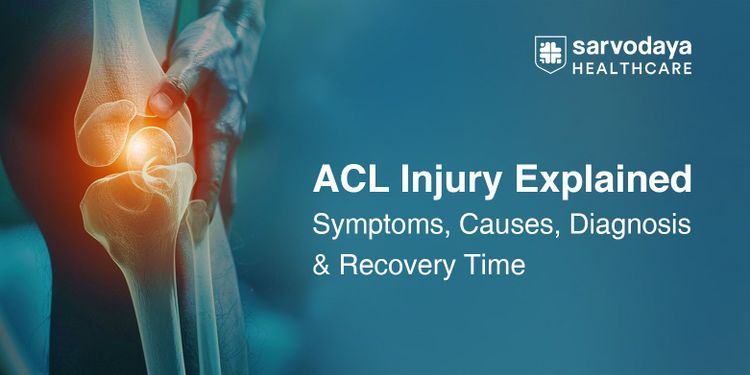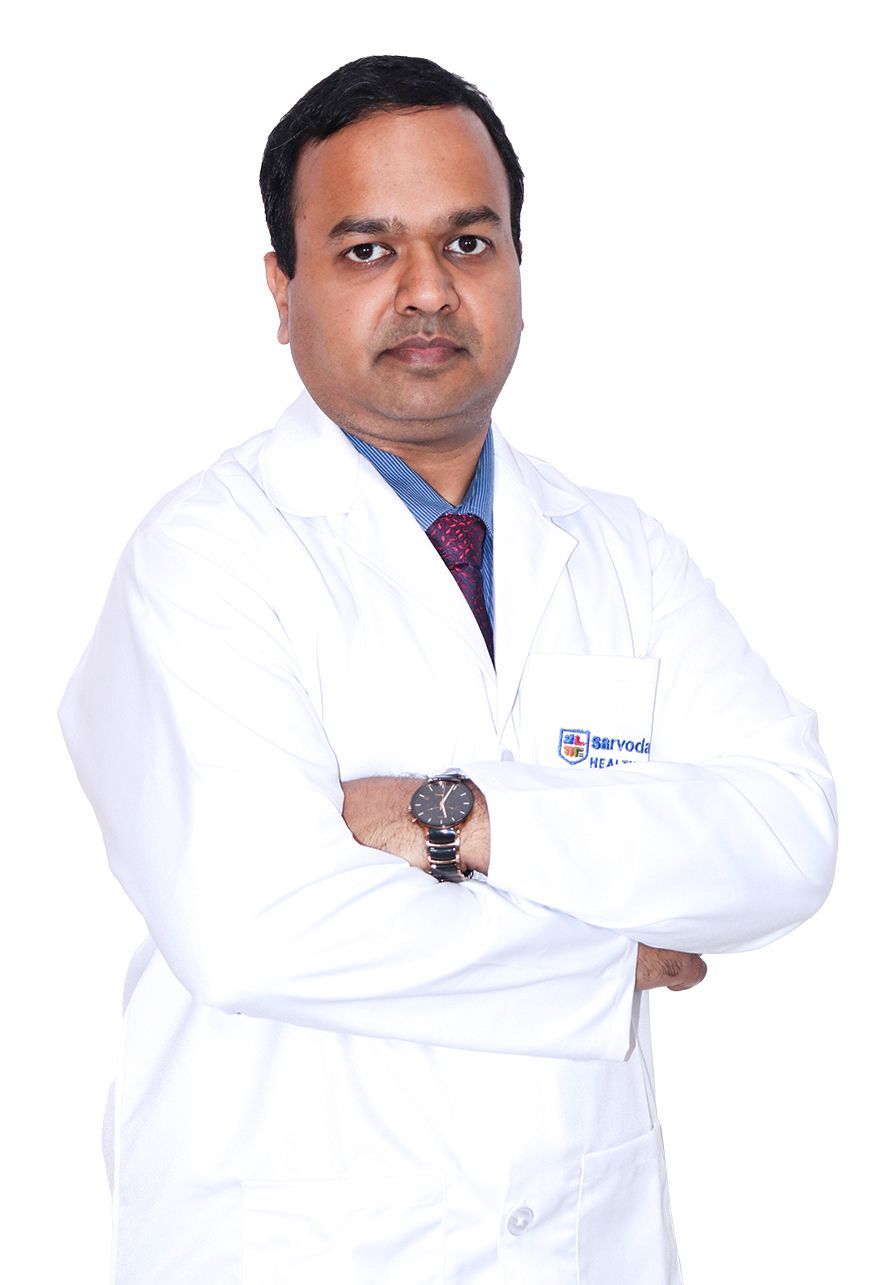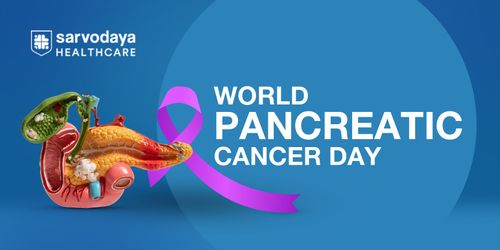The anterior cruciate ligament (ACL) is one of the most critical ligaments that stabilises the knee joint. An injury to this ligament can have a profound impact on mobility and day-to-day activities. Whether it occurs during sports, exercise, or an accidental fall, an ACL injury can lead to long-term discomfort and, if untreated, may cause further joint damage.
In this blog, we will explore the most critical aspects of an ACL injury, including symptoms and available treatment options.
Understanding an ACL Injury
An ACL injury occurs when the ligament that connects the thigh bone (femur) to the shin bone (tibia) is overstretched or torn. This ligament is essential for knee stability, especially during activities that involve sudden changes in direction, quick stops, or jumping. When damaged, it causes instability, making it difficult to carry out both routine tasks and high-intensity activities.
Different types of ACL injuries can affect people depending on the level of trauma:
- Partial Tear: When the ligament is stretched and damaged but not completely torn.
- Complete Tear: When the ligament is entirely torn, leading to significant instability.
- Sprain: When the fibres of the ligament are overstretched, causing pain and swelling.
Symptoms of an ACL Injury
Recognising the early signs of an ACL injury is crucial for timely treatment. Ignoring these symptoms may lead to further complications such as joint degeneration or meniscus tears.
Some of the most common ACL injury symptoms include:
- A popping sound at the time of injury
- Intense ACL injury pain that may make walking difficult
- Rapid swelling within a few hours of the incident
- Limited range of motion in the knee joint
- A feeling of instability or the knee “giving way” during movement
Causes of ACL Injuries
An ACL injury can occur due to various reasons, ranging from high-intensity sports to daily accidents.
Some of the most common causes are:
- Sudden stops or changes in direction while playing sports such as football, basketball, or cricket
- Direct collision or impact to the knee during contact sports
- Awkward landings after a jump
- Twisting injuries while running or exercising
- Accidents and falls that place stress on the knee joint
Women are at a higher risk of experiencing ACL injuries, which is linked to anatomical differences in the pelvis and leg alignment, as well as hormonal influences.
Diagnosis of ACL Injury
A proper ACL diagnosis is essential to confirm the extent of damage and determine the appropriate course of treatment.
The evaluation process typically includes:
- Physical examination: Special clinical tests such as the Lachman test or pivot-shift test help doctors check the stability of the knee.
- Imaging tests: MRI scans are the most reliable in confirming whether the ligament is partially or completely torn.
- X-rays: While they cannot detect ligament tears, they are often used to rule out associated bone fractures.
Getting an early ACL diagnosis is essential because timely intervention can prevent the injury from worsening and reduce the risk of long-term complications. Consulting an experienced orthopaedic surgeon in Greater Noida ensures that patients receive a personalised treatment plan.
Treatment Options for ACL Injuries
The choice of ACL injury treatment depends on the severity of the tear, the patient’s age, and activity level. Treatment may be non-surgical or surgical.
Non-surgical treatment:
- Rest, ice, compression, and elevation (RICE) method
- Bracing to support the knee joint
- Physiotherapy to strengthen the surrounding muscles
- Medications to manage ACL injury pain
Surgical treatment:
- ACL reconstruction surgery, where the torn ligament is replaced with a graft from the patient’s tissue (autograft) or donor tissue (allograft)
- Modern techniques, such as robotic-assisted reconstruction with the expertise of a robotic joint replacement doctor, allow greater precision, faster recovery, and improved joint stability.
The best orthopaedic hospital in Faridabad, Delhi NCR, provides advanced facilities and personalised care for both surgical and non-surgical management of ACL injuries.
ACL Injury Recovery Time
The ACL injury recovery time varies depending on the severity of the tear and the treatment chosen.
Recovery is also influenced by the patient’s age, overall health, and commitment to rehabilitation exercises.
- Non-surgical recovery: For mild cases or partial tears, physiotherapy and lifestyle modifications can help patients recover within 2–6 months.
- Surgical recovery: After an ACL reconstruction, recovery generally takes 6–12 months. Patients gradually progress from basic mobility to advanced strengthening and eventually return to sports or high-impact activities.
- Rehabilitation focus: Physiotherapy plays a vital role in recovery, helping restore knee function, reduce stiffness, and improve strength.
Working with the best orthopaedic doctor in Faridabad can ensure that patients receive structured rehabilitation programmes, reducing the risk of re-injury. With the proper care, most individuals regain full mobility and return to their normal lifestyle.
Conclusion
An ACL injury is a common yet serious condition that affects mobility, independence, and overall quality of life. Understanding the main ACL injury symptoms, causes, and the importance of timely ACL diagnosis is the first step towards effective management. With advancements in medical science, both surgical and non-surgical ACL injury treatment options are available to help patients regain strength and mobility.
At Sarvodaya Hospital, Faridabad, patients receive world-class care, supported by advanced technology and the expertise of highly skilled doctors. Whether the treatment involves robotic-assisted reconstruction or a structured rehabilitation plan, the hospital provides comprehensive solutions tailored to each patient’s condition. Sarvodaya also offers advanced robotic joint replacement, which is a game-changer for complex ACL injuries. This technology ensures higher precision during surgery, less tissue damage, faster recovery, and long-lasting results for patients. Preventive consultations with the best orthopaedic doctor in Delhi NCR are also available, helping individuals take proactive steps to protect their knees before injuries become severe.
Book an appointment now to receive the best possible care for ACL injuries and return to an active lifestyle with confidence.



















